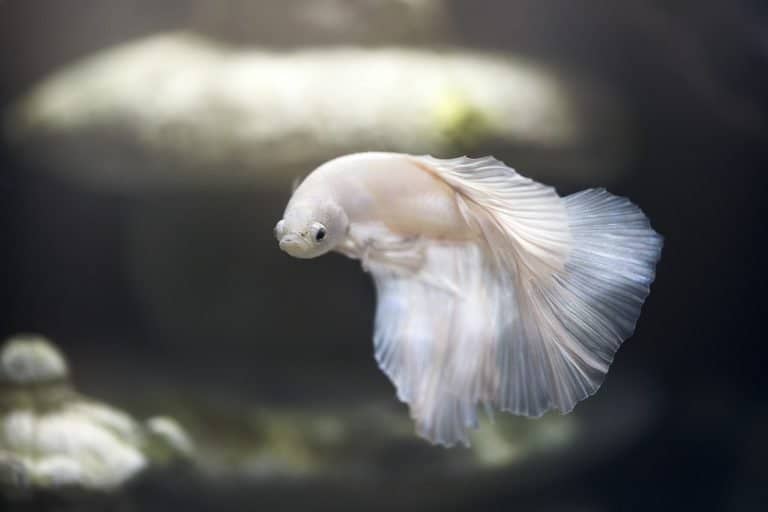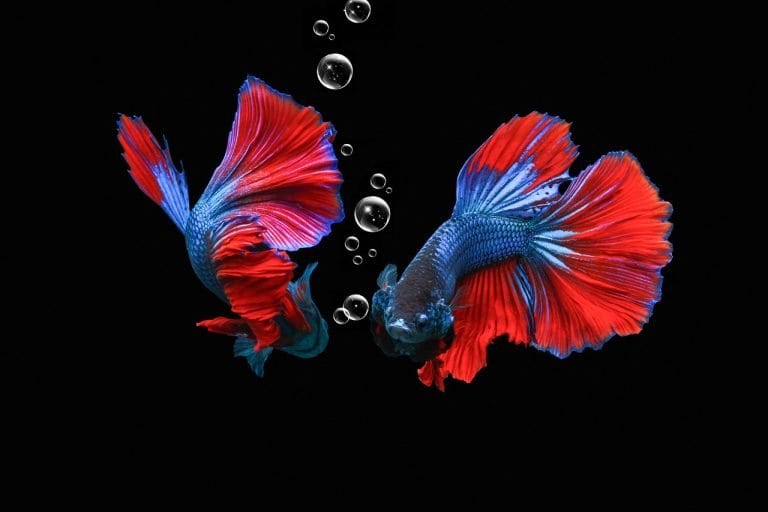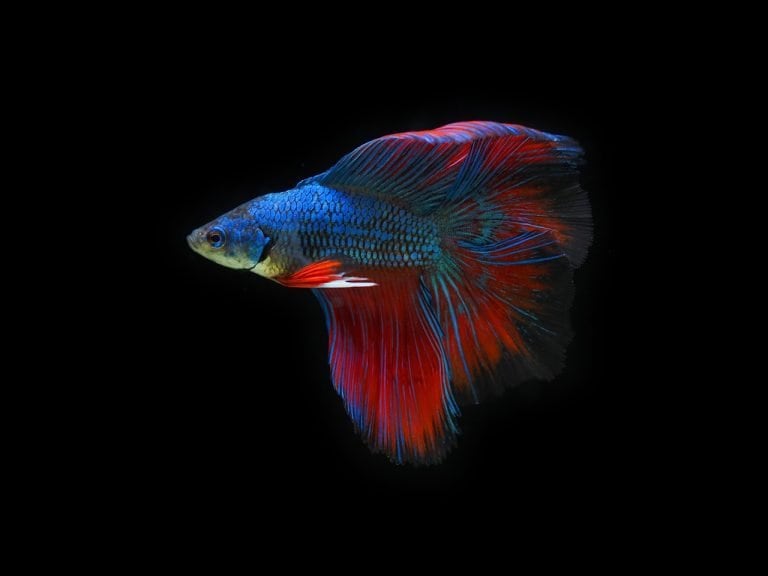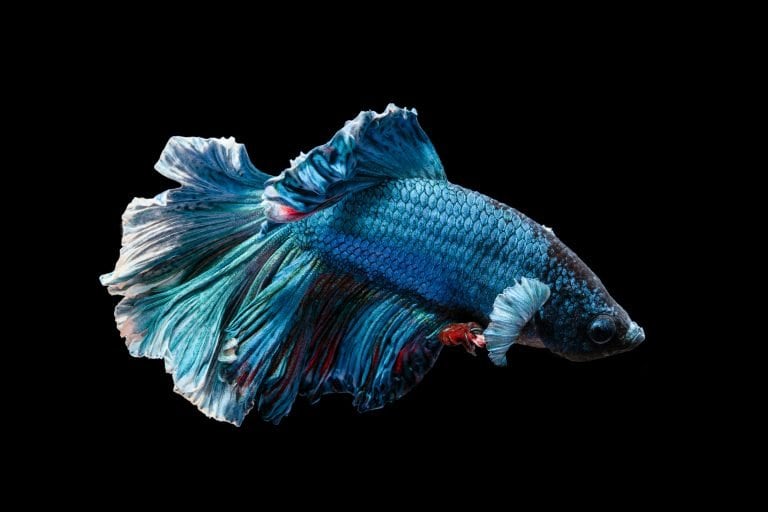In the intricate world of aquatic communication, Betta fish, also known as Siamese fighting fish, convey a complex range of messages through the nuanced movements of their fins.
This silent language is an eloquent expression of their behavioral responses to the environment and to each other.
The subtleties of fin positioning, fluttering, and spreading can indicate a Betta’s assertion of dominance, readiness to court, or levels of stress—each a critical element of their social interactions and freedom to thrive within their watery realms.
This article delves into the silent yet expressive world of Betta fish communication, exploring the significance of fin displays and how they serve as an essential, non-verbal dialogue that maintains the social order and reproductive opportunities within their species.
Key Takeaways
- Betta fish use fin flickering and color changes to communicate their emotional states and intentions.
- Fin displays, such as flaring and color changes, are signals of dominance and aggression.
- Courtship dances involve fin extension, tail waving, gill flaring, and fin flutters to attract females and highlight physical prime.
- Fins can also indicate stress and discomfort, with signs like fin clamping and tail thrashing. Recognizing and interpreting these indicators is important for the well-being of betta fish.
Understanding Betta Body Language
Betta fish exhibit a variety of fin movements that serve as nonverbal cues to communicate their emotional states and intentions to both conspecifics and humans. Among these movements, fin flickering is a nuanced gesture, often a rapid, subtle twitch or ripple of the fins, signaling agitation or a readiness to engage with the environment or another fish.
Concurrently, color changes can accompany fin movements, providing a visual augmentation to the nonverbal communication. These chromatic shifts are especially pronounced in Betta fish, as they can rapidly alter their pigmentation in response to stress, mating rituals, or territorial displays.
Analyzing these behavioral patterns reveals a sophisticated system where fin movements and color changes are integral to the Betta’s interaction with its surroundings, ensuring a dynamic balance of freedom and expression in their aquatic domain.
Fins as Signals of Dominance
In the intricate social hierarchy of aquatic life, betta fish often assert their dominance through expansive fin displays that serve as a clear signal to rivals and potential mates. These fin flaring exhibitions are not merely for show; they are a critical component in the silent language of bettas that conveys power and territorial control.
The visual spectacle is both a warning and a demonstration of strength, often accompanied by color changes that enhance the perceived threat or superiority.
- Fin Flaring
- Intimidation tactic to deter encroaching bettas
- Exhibition of size and health to prospective mates
- Color Changes
- Amplify the impact of fin displays
- Signal heightened aggression or readiness to confront
Analyzing these behaviors reveals a complex system of nonverbal communication that betta fish utilize to maintain social order and reproductive success. This resonates with an audience that values the freedom and sovereignty reflected in these natural displays of dominance.
Courtship Dances and Fin Displays
Transitioning from displays of dominance, betta fish engage in elaborate fin maneuvers during courtship to attract mates and ensure reproductive success. These aquatic displays are a complex series of fin flutters and color flashes designed to communicate fitness and desirability. During courtship, male bettas exhibit a heightened level of fin activity, which not only showcases their splendid hues but also their vigor.
| Behavior | Description | Purpose |
|---|---|---|
| Fin Extension | Males spread their fins widely to appear larger | Attract females |
| Tail Waving | Slow, deliberate movements of the tail fin | Signal readiness |
| Gill Flaring | Gills puff out alongside fin displays | Intensify visual impact |
| Fin Flutters | Rapid, subtle fin movements | Exhibit stamina |
| Color Flashes | Sudden changes in color intensity and pattern | Highlight physical prime |
This table summarizes the core components of betta fish courtship, allowing enthusiasts to recognize and appreciate the nuances of these fin displays.
Stress Indicators Through Fins
While courtship displays are integral to reproductive signaling, certain fin movements can also serve as unequivocal indicators of stress in betta fish. These movements, while subtle, are critical for owners who value the freedom and well-being of their aquatic pets to recognize and interpret.
- Fin Clamping
- A tucked or flattened posture against the body, rather than fanned out, often signifies discomfort or unease.
- The degree of clamping can correlate with the severity of stress, requiring careful observation for early intervention.
- Tail Thrashing
- Abrupt, jerky movements or thrashes of the tail fin can indicate a reaction to immediate stressors or environmental dissatisfaction.
- Persistent tail thrashing might result in self-injury, emphasizing the need for swift identification and resolution of the underlying cause.
Interpreting Fin Movements
Betta fish exhibit a range of fin movements that, when accurately interpreted, provide valuable insights into their emotional and physical states. The analysis of fin flutters and tail positioning reveals a complex system of non-verbal communication. These movements are not random; they serve as indicators of a Betta’s intentions and well-being. Observing the nuances of fin dynamics can be akin to understanding a silent language, one that speaks volumes about the individual fish’s experiences and desires for autonomy and interaction.
| Fin Movement | Possible Meaning | Context |
|---|---|---|
| Erect Fins | Alertness, Interest | Encountering new stimuli |
| Clamped Fins | Stress, Submissiveness | Facing a dominant fish or threat |
| Fin Flutters | Excitement, Attraction | Courting or exploring new areas |
| Extended Tail | Aggression, Territorial Display | Confronting another Betta |
| Tail Positioning | Readiness to Engage or Retreat | Interacting with environme |





